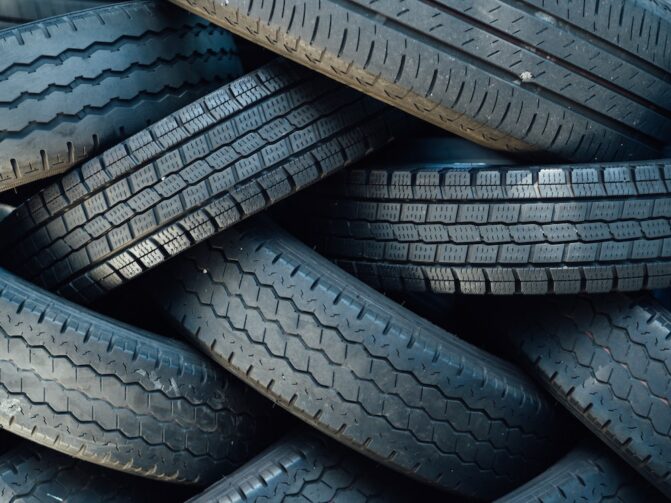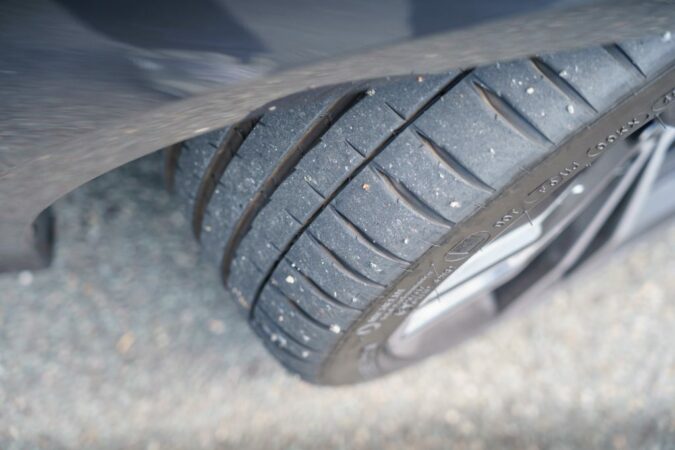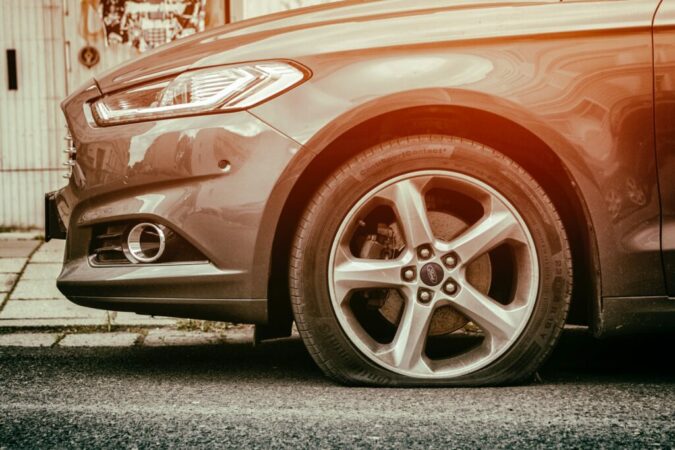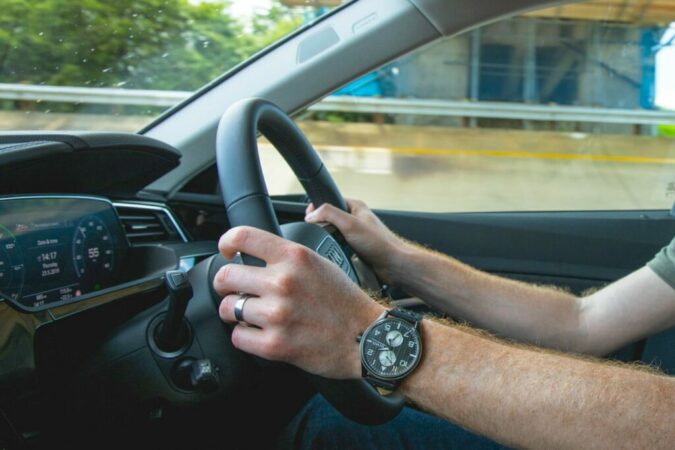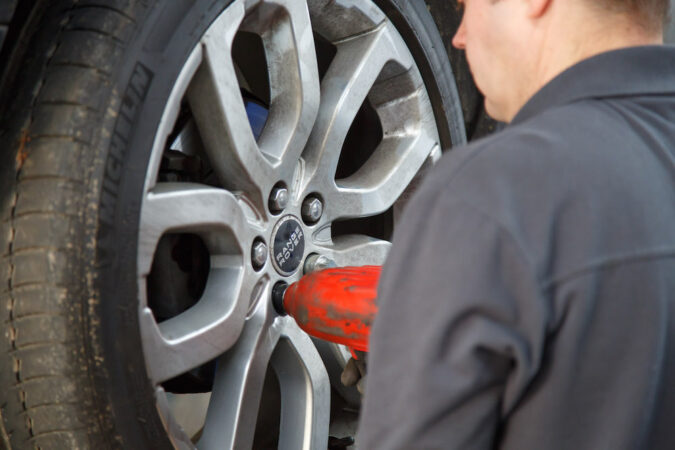Are you having problems with cupped tires and you cannot understand where these problems come from? Well, if this is the situation you are in, then you are in the right place because in this article, there will be quite a lot to cover on this topic of cupped tires and we will learn all of the possible causes for this problem.
- Uneven Tire Wear
- Is It Serious?
- Wear Patterns
- Tire Cupping
- Causes
- Symptoms
- Fixes
- Cost To Fix
- Conclusion
- FAQs
Doing research on what is causing a certain problem is always a good idea. It is really easy to just replace the tires with new ones. But by doing this, you only solved the problem temporarily and not permanently.
So, if your tires were cupped once, they will be again damaged and you will have to replace them prematurely. So, if the average tire lasts for 50,000 miles, you can expect this service life to be cut in half or only cut into one-third of the possible life of the tire.
This is why you need to learn more about the causes of this certain problem. And you should not worry because we are going to explain all you need to know when it comes to tackling this problem.
First, we are going to learn what is uneven tread wear and whether this is a serious problem. Then, we will cover the tire wear patterns and the causes of a cupped tire, as well as the symptoms of cupped tires. And once we clear this out of our way, we will dive into how to solve the problem. So, if you want to learn more, follow along.
Uneven Tire Wear
Now before we dive into the cupped tires problem, let’s first learn more about what is uneven tread wear on a tire. People are facing similar issues, so we need to further elaborate on this topic and understand more about what is uneven tread wear in general.
So, what is uneven tread wear? Well, before we dive into this question, we need to learn what is wheel alignment since this wheel alignment basically determines if you have uneven tread wear or not.
When it comes to cars, it is worth noting that there are three angles that you need to know when it comes to the position of the tires. And these are the camber, caster, and toe.
The caster angle is usually predetermined by the factory (be it a positive caster or a negative caster). But the camber and toe are the two angles susceptible to change and when these angles change to the positive (toe in or positive camber) or negative (toe out or negative camber), you get different types of uneven tread wear on your car.
And here we come to the question of what is uneven tread wear. Uneven tread wear is basically the abnormal wear of the tires of your vehicle.
And there are multiple types of uneven tire wear based on the cause of this condition. But more on the types including the cupped tires, we are going to elaborate later on in the article. Now let’s take a look at whether this problem is serious or not.
Are Cupped Tires Serious
Another thing that we would like to discuss before we cover the cupped tires and the other tread wear patterns is to understand whether this is uneven tread wear a serious problem or not.
And when it comes to this, we can honestly say that this is a serious matter that needs to be addressed as soon as possible.
Any car that has uneven tread patterns and its tires wear in strange ways is a potential hazard. Both for the driver and passengers. As well as for other motorists.
Whenever you have a tire that does not wear in the manner that is expected, you just have to address this problem and sort out the reason why is this happening. And then, of course, you have to do a wheel alignment on your vehicle.
Without a wheel alignment, everything you do on your car is in vain and you will have a problem down the line again with uneven tread wear. So, we can say tire alignment and adjusting all the angles is key for maximum safety on the road.
But what are the tire wear patterns and what are cupped tires? More about that, we are going to elaborate next.
Now that we covered what is uneven tread wear, let’s now learn more about the tire wear patterns before we cover the cupped tires. Which are also one of the bad tire wear patterns.
Tire Wear Patterns
When it comes to tire wear patterns, the most common are the basic tire wear patterns that we are going to focus on in this chapter.
These are the inside tire wear when the tire wears on the inside (aka it’s often referred to as inner tire wear, or inside tire wear), the outside wear when the tire wears on the outside, and the center wear. For more context, do head over to our explainer on what causes tire wear on the inside, as well as the outside of your front tires wearing.
When it comes to the inside and outside wear, this situation is always caused by a bad camber angle. There is simply too much negative camber (like those tilted wheels on cars) or too much positive camber and this creates wear on the sides.
While center tire wear on the other hand is almost always caused by overinflation (i.e. too much tire inflation). So, if you over-inflate your tires, you can expect them to wear in the center.
Another type of uneven tire wear is edge wear, which can be caused by underinflation of the tires. And the center of the tire simply goes on the inside and the edges wear more prominently.
There are also flat spots that are often created by lockups. So, if you brake hard and you lock up the wheels, you can expect the tires to create flat spots.
There is also toe wear. This is a situation known as feathering. A situation caused by a bad toe angle that makes the tires feather out.
And the last type of tire wear is tire cupping. And more on what cupped tires are going to elaborate on in the following chapter in great detail.
What Are Cupped Tires
Now let’s take a look at what are cupped tires. As we noted previously, this is also an uneven tread pattern that often appears on tires.
But tire cupping is something really different. A completely different beast from all the other types that we mentioned.
And this is because tire cupping occurs randomly on the tire. You don’t have tire cupping on all the tire surfaces. But this can happen in some places of the tire and some of the surfaces might seem really good.
This is the case when you have low spots on the tire in random places. This situation can be very problematic because it will create considerable vibrations inside the cabin.
Just imagine that your tires were not round and were hexagonal in shape. So, you have a smooth surface and then you have a flat spot, then again you have a smooth surface and a flat spot. And the weight of the cars exacerbates this condition. Creating intense vibrations inside the cabin.
These vibrations can be present at any speed, like when your car shakes when accelerating but not when coasting or my car shakes when I hit 60mph. The car will not be happy at all in this situation and you will end up in a dangerous situation on the road that could be potentially deadly. Especially at highway speeds.
These cupped tires are not safe at all and you should look to sort out the problem. But what are the causes of cupped tires? Well, let’s elaborate more on them in the following chapters.
Tire Cupping Causes
Now that we covered the uneven tread wear patterns and learned what is a cupped tire. It is time to move on and learn more about the causes of tire cupping.
Knowing the causes will really going to help you out when it comes to solving your problem with the cupped tires. So, let’s cover them in detail and see what could be the cause of the cupped tires.
Cupped Tires Causes #1: Worn Out Suspension Components
The first common cause for cupped tires is the situation with your suspension components. As you probably know, in the car’s suspension, there are a few different components.
Namely, the struts, lower control arms, upper control arms, bushings, ball joints, and sway bars. All these components play a big role in how your car is handling.
So, if there is increased wear on these components, exacerbating the suspension repair costs, they can create problems like the situation with the cupped tires.
This is why we would recommend addressing the problems if there are any. Fix everything on your suspension before you replace the tires. This way, you will avoid future issues.
Cupped Tires Causes #2: Misaligned Tires
The second major cause of the cupped tire problem is wheel misalignment. As you probably know, there is a procedure known as wheel alignment that is done on cars.
Wheel alignment is crucial when it comes to aligning all the angles of your suspension perfectly. As we noted they are the car camber, caster, and toe angle.
These angles have to be in the recommended spec in order for you not to have cupped tires or any other uneven tread wear pattern. Now let’s move on to the next cause of this problem.
For more insight on alignments, do check out our resources on what a bad wheel alignment is, in addition to whether you need an alignment after new tires, as well as where to get a tire alignment near me. On top of that, we’ve looked at the costs associated with getting tire/wheel alignments.
That includes the general cost of an alignment, the cost of a typical wheel alignment, the cost of a 4-wheel alignment, whether a $40 wheel alignment is a good idea, and the cost of a wheel alignment at Walmart, as well as how much does an alignment cost at Firestone.
Cupped Tires Causes #3: Unbalanced Tires
The next probable cause on our list of causes for cupped tires is the most common cause for cupped tires. And this is the problem that you should pay attention to the most.
And this is tire balancing. Besides wheel alignment, tire balancing is the second most important aspect when it comes to making your car drive perfectly well.
So, what is tire balancing? Well, as you probably know, not everything is perfect, rims are not perfectly built to weigh the same, as well as the tires are not equally balanced from the factory. Unbalanced tires are always bad news when it comes to cupped tires.
There is some unevenness. And this is why you need to balance the tires. And for this procedure, the wheel is removed and rotated on a machine. The machine is telling the technician what weight size they should install and where on the rim.
Once the weight is installed, the tire is rotated again and the wheel is rotating perfectly. So, after this procedure, it is highly unlikely that you will come across a cupped tire problem again.
Cupped Tires Causes #4: Underinflated Tires
The next cause for cupped tires that we are going to discuss is the situation when you drive a lot with underinflated tires.
As you probably know, tires need to be inflated always at the right PSI. If you drive a lot with underinflated tires, you risk tire damage.
And one of these types of tire damage is when the tires get cupped. So, our recommendation is to top up your tires with compressed air or nitrogen every month.
There are temperature fluctuations that can affect the pressure in the tires. Also, tires can lose air. So, inflating them regularly is the way to go. At least compressed air is free at almost any gas station across the country.
Some people recommend nitrogen but from our experience, there isn’t any big difference between the two types of gas you put in your tires. Otherwise, if you need to learn more about whether can you mix air and nitrogen in your tires, as well as where to fill your tires with nitrogen, our write-ups there might help.
So, go for the free option in order to avoid cupped tires.
Cupped Tires Causes #5: Poor Quality Tire
The next very common cause for cupped tires is poor quality tires. As you probably know, some tires are cheaply made.
And what can happen is that if you overinflate them or if they get some sort of damage to the internal structure, there could be some uneven spots. This is one side effect of buying from the worst tire brands instead of opting for the best car tires from the best brands of tires or the top tire brands out there.
You have probably seen a tire that has a bubble on it. And this is one of the causes behind it. Overinflating cheap tires can lead to tire cupping and another type of damage to the tire.
Cupped Tires Symptoms
So, we learned the causes of cupped tires. Now let’s learn more about the symptoms that you will experience when you are driving a car with tires in this condition.
There are a few symptoms that will be present while you drive the car, so let’s cover them in detail and learn more about what you can expect in this situation.
1. Cupped Tires Sound
Now let’s begin with the symptoms of cupped tires. One of the main symptoms associated with this problem is the cupped tire sound.
These tires that are cupped will produce noises, especially when the tire rotates on these high spots on the tire.
It is tough to decide on the sound type since this symptom more resembles a noise than an identifiable sound. This is why if you drive and your tires are very noisy, especially at higher speeds, it is a high chance that there is damage done to them in the form of cupping.
These symptoms shouldn’t be ignored and you should address the problem accordingly. Now let’s move on to the next symptom.
2. Vibrations Inside The Car
The next symptom of cupped tires is the situation of vibrations inside the cabin. Not only that the tires will be very noisy and produce noise.
But they will also be very prone to creating vibrations inside the cabin. At first, these vibrations will be felt on the steering wheel, like when your steering wheel shakes at low speeds or if your steering wheel shakes when braking downhill. But if the problem becomes greater and greater, there will be vibrations inside the cabin as well.
Things might start to rattle and produce rattling noise (especially when accelerating). And this is definitely a clear sign that you have to address this problem. But how you can fix this problem? More about that, we are going to elaborate on this in the following chapters after we complete the symptoms.
3. Car Pulls On One Side
The next symptom on our list of symptoms of cupped tires is the situation when the car pulls on one side. In other words, either the steering wheel is not straight, or your car is pulling either to the left or right.
Let’s say that you drive the car on the road and you hold the wheel steady, if you release the wheel, the car will immediately start to lose control because of the cupped tires.
This shouldn’t be actually the case if the tires are in good condition and everything is aligned. The car should drive perfectly straight even if you don’t hold the wheel for a second or two.
So, this is one of the best tests that you can do in order to determine whether you have an alignment issue or not. Now let’s move on to the last symptom on our list.
4. Visible Tire Cupping
And the last symptom of cupped tires on our list is the visible cupping of the tires. If you do a close inspection of the tire you will immediately notice this. But how to tell a cupped tire from a good tire?
Well, a cupped tire will have high spots, like cups. And these high spots will be worn quite a bit more compared to a good tire.
So, if you notice that there are some abnormalities like high spots, then you definitely are experiencing some tire cupping. But how you can fix this problem? Well, let’s elaborate more on this topic in the following chapter in detail and see how this is done the right way.
Tire Cupping Fix
Now let’s cover the tire cupping fix, we learned the causes and symptoms of this problem. Now we can move on to cover how to fix the problem.
What is worth noting is that the first thing you should inspect is the suspension. You need to check your struts, ball joints, control arm bushings, and other links that can attribute to problems like these. And if there are abnormalities, you should properly sort them out.
Then once you did that, you can move on and replace the tire with a new tire. And also make sure that you balance the tire. Since as we noted previously, this problem is often caused by cheap tires or poor balancing.
Once you have balanced the tires, the next you want to do is to do a wheel alignment. Wheel alignment is essential to any suspension work. Just to make sure that you will not come across uneven tread wear in the future. Overall, that’s all you have to do in order to fix the cupped tires problem.
Cost To Fix Cupped Tires
When it comes to the cost to fix cupped tires, it is worth noting that prices might vary depending on what type of work your car needs.
A new set of cheap tires will cost you $50 to $150 a piece for most cars out there. Also, installing and the tire balancing will cost you about $20 per tire.
Wheel alignment is a procedure that will cost you anywhere between $60 and $100. Overall, these are the costs involved in this type of work.
If you have some suspension problems, this will cost you extra money since some parts have to be replaced. And this should be done before you do anything of the items that we listed previously.
Cupped Tires: In Conclusion…
In this article, we covered the topic of cupped tires. First, we learned what is uneven tread wear and the different types of uneven tread wear. Including the cupped tires.
In the second part of the article, we discussed the causes and symptoms of this problem. Lastly, we discussed how to fix the problem and the costs involved.
Frequently Asked Questions
Now let’s answer frequently asked questions.
What Causes Cupping Tires
Tire cupping is often the cause of poor tire balancing. The tire probably was mounted without being balanced and this is what caused the problem. Also, cheap tires are another major cause. Cheap tires have very weak construction. And if you overinflate them, they could start cupping.
Is Tire Cupping Dangerous
Yes, it is dangerous. Any condition that is not normal tire wear is dangerous. This tire can explode in the place where the tire has cups. And you definitely don’t want that to happen at highway speeds.
How To Tell Which Tire Is Out Of Balance
If the tire started to create cups, then this is a clear example that the tire is out of balance. Also, any other irregular tire wear can indicate a tire that is out of balance.
Why Does My Tire Have A Bump
This bump is known as a tire cup. And the condition is known as tire cupping. A condition mainly caused by poor tire balancing, or using cheap tires that are prone to these issues.
What Causes Tire Wear On The Inside
When a tire wears on the inside means that you have too much negative camber. The bottom of the wheel is pointing outwards and this is basically the main cause of inside tire wear.
What Causes Tire Feathering
Feathering is a condition where the toe angle is not correct. Instead of the wheel going in a straight line, it actually points inward or outward. This is not an ideal situation in terms of tire wear and you should definitely try to sort it out.

